I like to say my heart is half Amazonian, half Californian (and when I’m in Paris, it’s completely French—pardon moi, but how could it not be?). I’ve been lucky enough to taste fruit from so many places in this life, but in my humble experience, nowhere grows it better than the Amazon and California.
But being an Amazonian by birth, there’s one fruit that will always be my pride. Our gift to the world. These days, you’ll find it on menus from Massachusetts to Melbourne, ever since some wellness guru dubbed it the ultimate antioxidant miracle. I can’t say I’m thrilled that it took a trend to put it on the map, but I’ll admit, it’s been fun to watch the world fall for something we’ve always known was special. Well, I couldn't care less about this said superfood status. To me, it’s just always been straight-up delicious. My fruit.
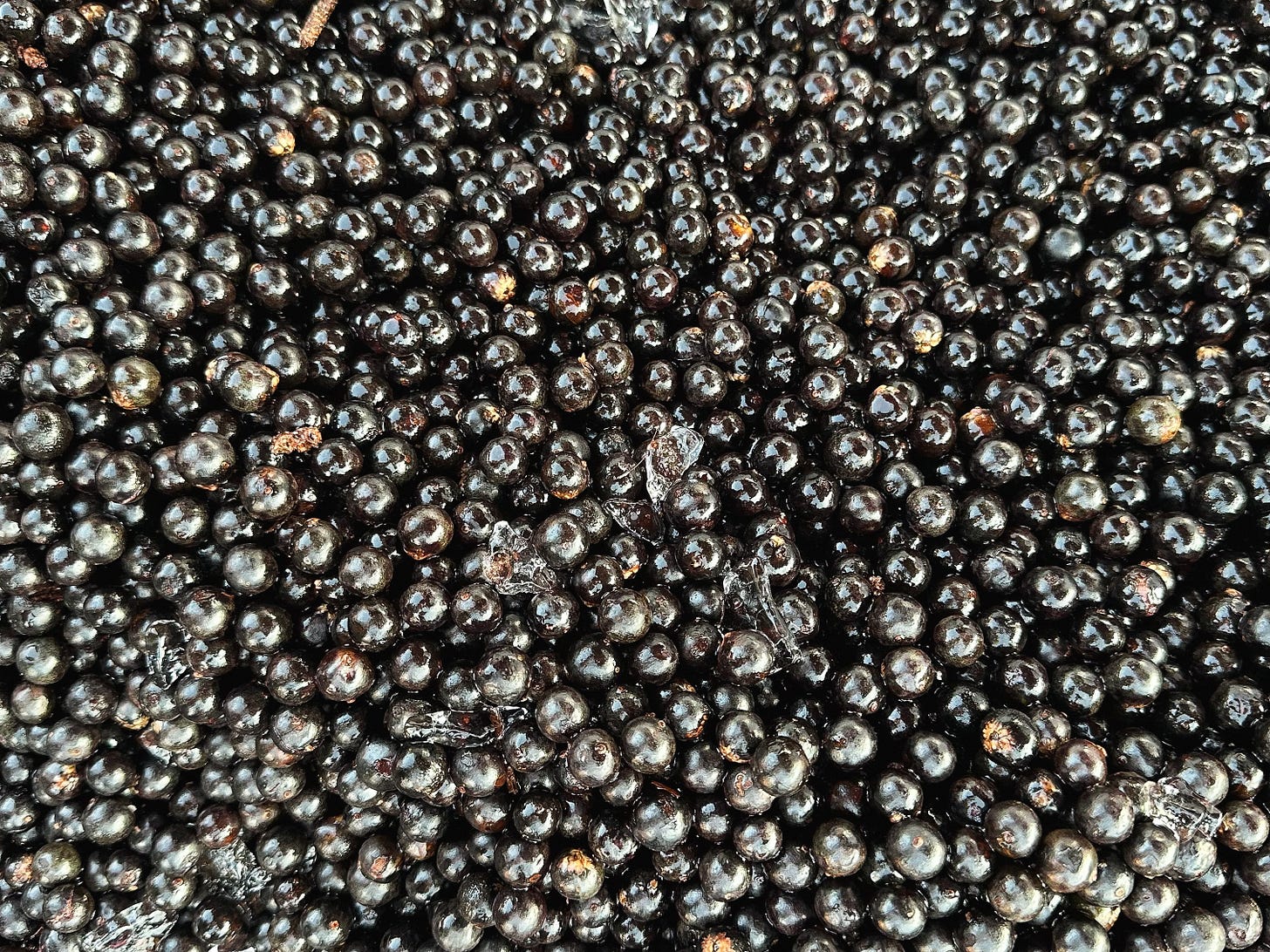
I grew up with açaí as part of my diet, eaten the way it was meant to be: straight from the source: pure, intense, smooth, cold, sometimes barely sweetened, and never (not once) with yogurt. Or peanut butter. Or, heaven help us, protein powder. In Amazonian cuisine, açaí also takes on a savory role, served with fish, shrimp, jerk, or mixed into tapioca for hearty, more satisfying dishes. Most importantly: açaí is simple.
I’m no purist, let’s be clear. I avoid terms like "authentic" and "original" when it comes to food because, well, what even is authentic? I won a cooking competition in the US making French dishes with Brazilian ingredients. Without this carnival of flavors, we'd be lost, and honestly, it's the beauty of breaking authenticity that gives us the best experiences.
I’m a public defender of what tastes good. Or, sometimes, better.
And I have no shame in saying this to anyone’s face: the açaí they’re serving you at those trendy açaí shops with cliché Amazonian décor and barefoot cool guys walking around, pilling up all sorts of topping and gimmicks? It’s nothing but awful okay.
Now, there are a few reasons why I believe those trendy açaí bowls are usually a crime against good taste. First off, if you’ve never had anything better (and by ‘better,’ I mean at least 60% less sugar), you probably won’t even notice the difference. Second, açaí is harvested in a very specific, delicate way. It’s a unique product that’s meant to be sustainable and extractivist. But when it’s shipped across the ocean, well, it loses a lot of its magic, so they compensate with mixes and toppings. And third? They’ll charge you an arm and a leg to convince you it’s healthy, good for you, and, naturally, delicious.
But don’t feel bad. I’ve been a victim myself. That is, until I figured out how to recreate something closer to what I grew up with, using locally available ingredients that still capture the complexity of the flavors I know and love. And I hope you'll love too.
Enter: blueberries.
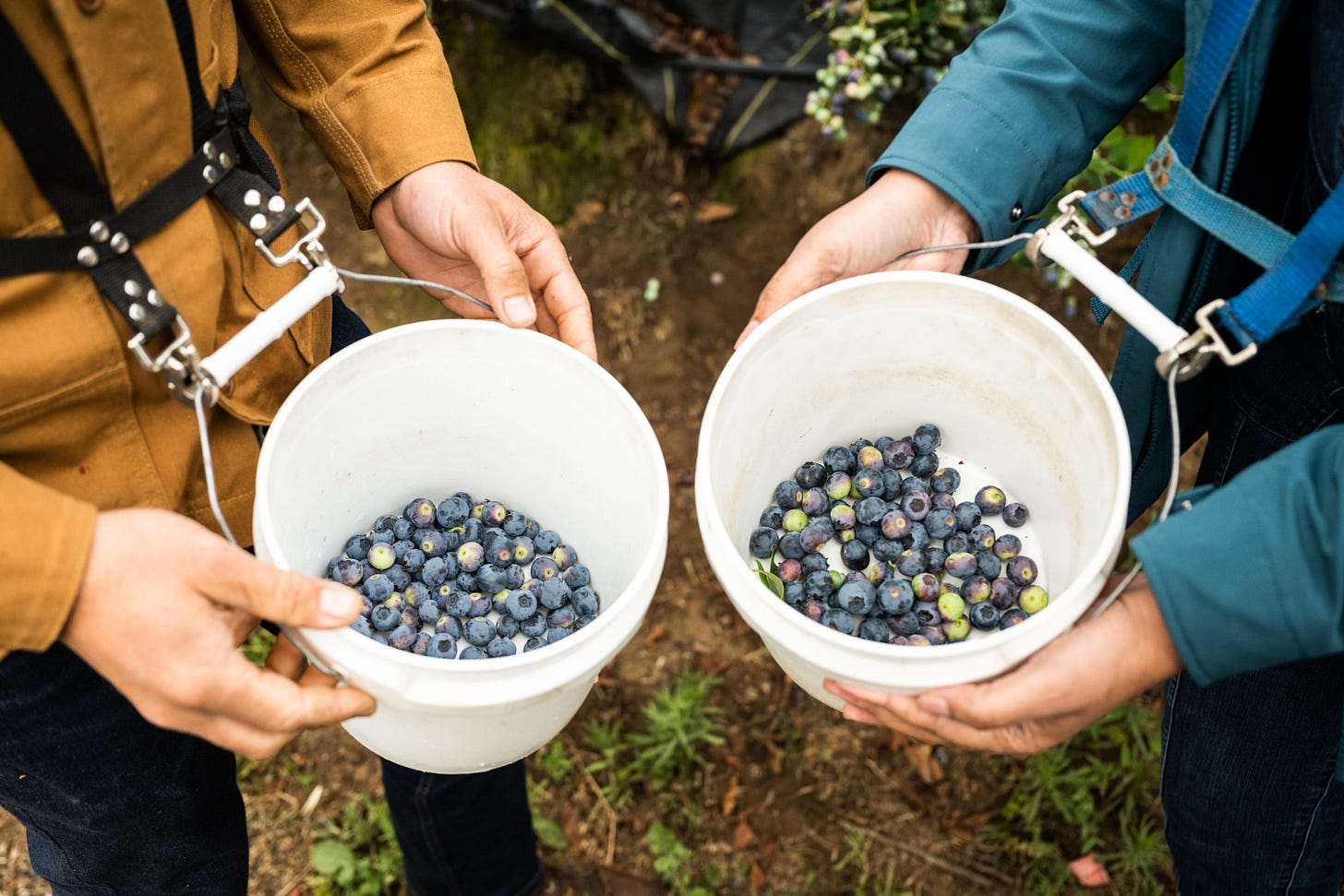
I barely knew what a blueberry tasted like until I moved to California in 2020. Then in 2023, CA Grown invited me on a farm tour. We visited a blueberry farm, and I was instantly smitten. Blueberries don't grow in Brazil, and I had imagined how they tasted like for soooo long. Now, there I was standing in the field, gently plucking the sweetest ones straight from the bush… and maybe sneaking a few too many into my mouth.
It felt like I had discovered the second purple berry of my life.
Okay, technically açaí isn’t a berry. It's a drupe, which means it has a pit inside. Unlike a blueberry, which is soft and juicy, açaí is firm and requires the fruit to be mashed or pureed into a pulp to unlock its flavor. But what they do have in common is this complex, floral, almost perfumed presence.
While they're both bold, rich, and beautifully nuanced, açaí is a lot more about texture: the smooth, rich pulp that gives it such a unique feel. While blueberries, California blueberries, in particular, are about flavor and fragrance: sweet, tart, fresh, and bursting with a lively zing. In a bowl, they fit perfectly together, each one with its subtle complexity that actually balances each other instead of overpowering it.
What do I truly love, though? These blueberries are grown with care right here in my new home state. California is one of the top blueberry producers in the country, and many of these farms are family-run—real people, real passion, real flavor. It reminds me so much of how açaí is harvested and used in community-run businesses in the Amazon, both focused on quality and a deep connection to the land. The kind of quality (and taste), I can assure you, you won't find so easily in a frozen, pre-made bowl.
Most of the time better doesn’t need to be complicated. Sometimes, it’s as simple as knowing your ingredients, honoring where they come from, and finding harmony in an unexpected pairing. Açaí and blueberries, two fruits from opposite corners of the world, make so much sense in my kitchen. A surprising yet stunning combination that feels so right, I hope it becomes a standard in yours too.
Somehow, even though blueberries don’t grow in the Amazon (at all), they’ve found their place in my bowl. Just like I’ve found mine in California: an Amazonian, unexpectedly at home.
This recipe was created in partnership with CA Grown and California Blueberries. As always, all thoughts, stories, and opinions are entirely my own, and so is the recipe. 💜 A heartfelt thank you to California’s incredible growers for welcoming me into their world and letting me share a little taste of it with you.
Would you like to try another CA blueberry recipe?
Blueberry Açaí Bowl
This is my way to enjoy açaí that still honors its roots. I blend it with sweet, juicy California blueberries, their tart brightness and delicate floral notes play off the açaí’s deep, earthy richness in such a satisfying way. It’s a match that somehow works perfectly, even if blueberries don’t grow anywhere near the Amazon. In a way, they mirror my own story: unexpected here, but right at home.
To build on the creamy base, I love topping it with crisp coconut flakes and California pistachios for that tropical flair and a salty crunch that keeps each bite interesting.
You’ll notice the texture here is smooth and spoonable, rich and creamy without being too thick, quite different from most commercial bowls. I stick to this consistency because it’s the original Brazilian way, and I prefer to keep it as close to the authentic experience as possible. But if you’re craving a more soft-serve texture, simply freeze the blueberries before blending.
Makes 2 servings
2 cups (300 g) California blueberries, divided
2 packs (200 g total) organic, pure, unsweetened açaí pulp (frozen)
1 small banana (or ½ of a large one, about ½ cup sliced)
2 tablespoons (30 mL) honey (or to taste)
Coconut flakes, for topping
½ cup salted California pistachios, chopped, for topping
Run the frozen açaí packs under warm water for 5–10 seconds to slightly soften. Break into chunks and add to a high-speed blender.
Add 1 ½ cups of the blueberries (fresh or frozen), banana, and honey. Blend on high until thick, smooth, and spoonable. It should be creamy but not too runny. No liquid is needed unless your blender really needs help. Scrape the sides or pulse if necessary.
Spoon into a bowl and smooth the top. Garnish with the remaining ½ cup of fresh blueberries, coconut flakes, and chopped salted pistachios.
Best served immediately, while it's cold and refreshing.
To prep ahead, blend the base and freeze in an airtight container for up to 2 days. Let it sit at room temperature for 5–10 minutes before eating, or re-blend to refresh the texture. Add toppings just before serving.
Notes:
If you want to turn this into a Blueberry Açaí Sorbet, you’re so close already! You’ll just need to adjust the texture by reducing the banana a bit, and possibly churn it or freeze-and-stir to get that classic scoopable sorbet consistency:
With an ice cream maker: Blend all ingredients until smooth. Churn in your ice cream maker (15–20 minutes) until sorbet-like. For firmer texture, freeze 1–2 hours before scooping.
Without an ice cream maker: Blend and freeze in a shallow container. Stir every 30 minutes for 2 hours to break up ice crystals. Freeze until firm, then let sit 5–10 minutes before scooping.


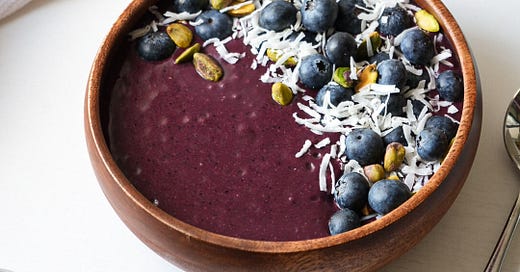


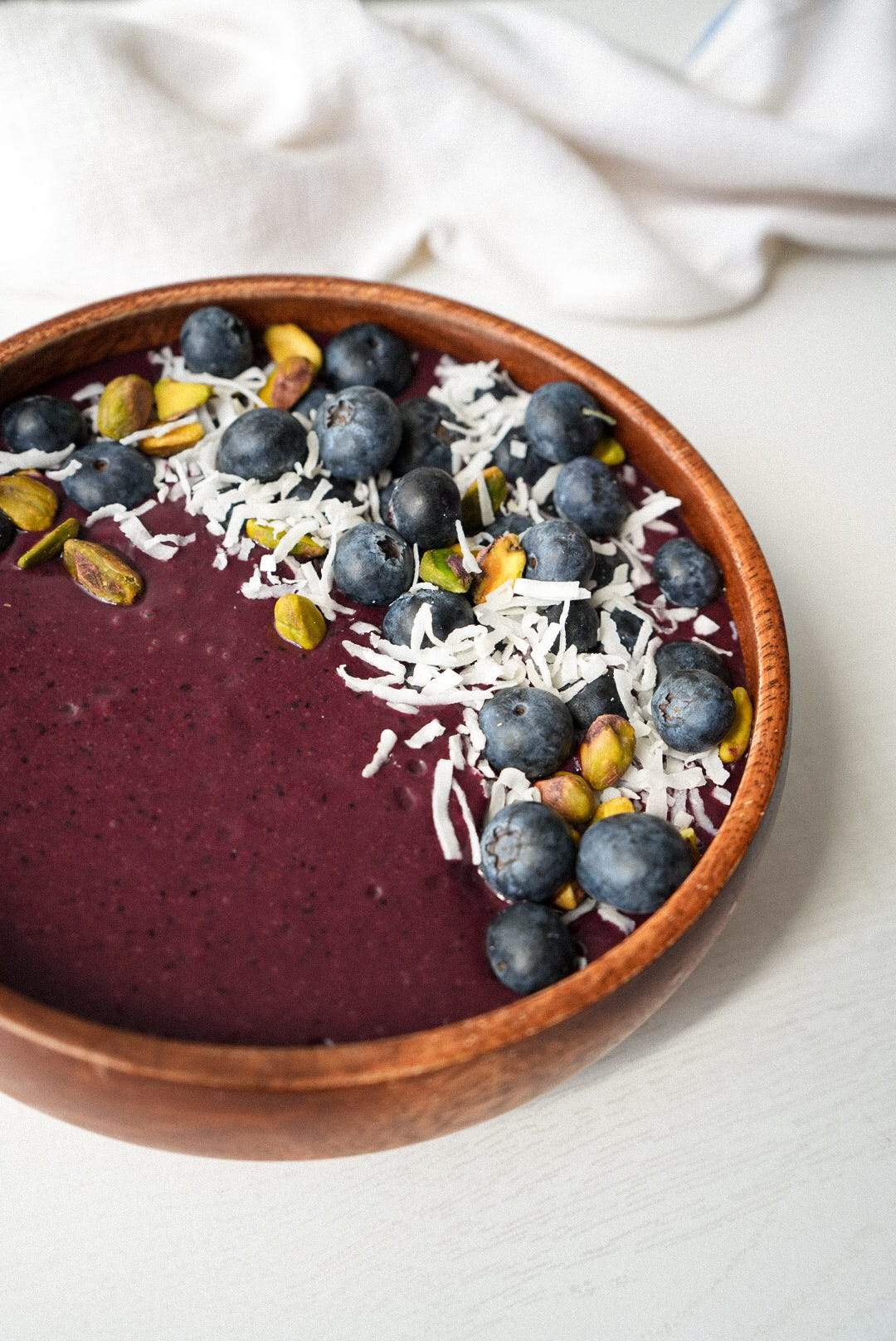
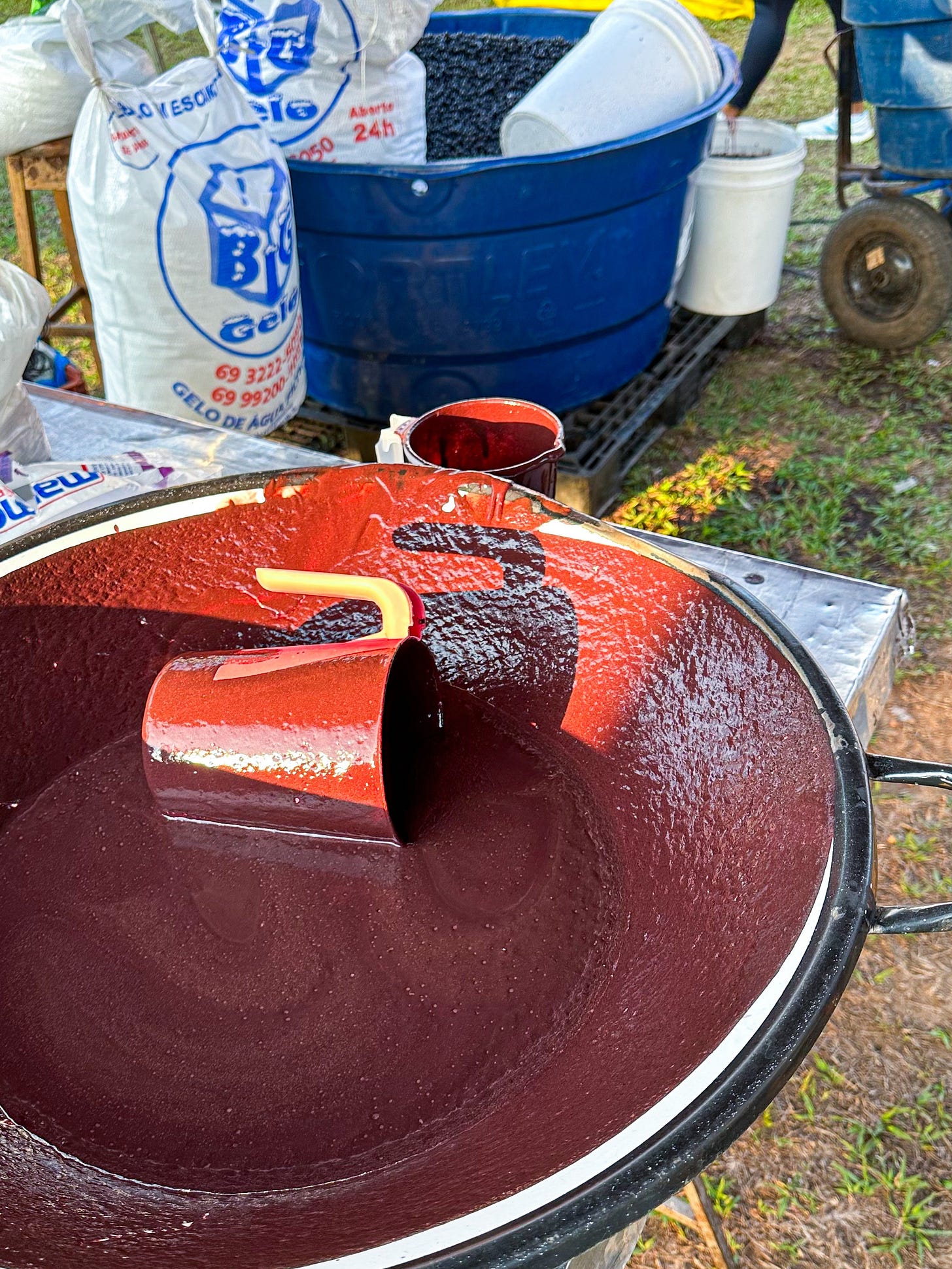
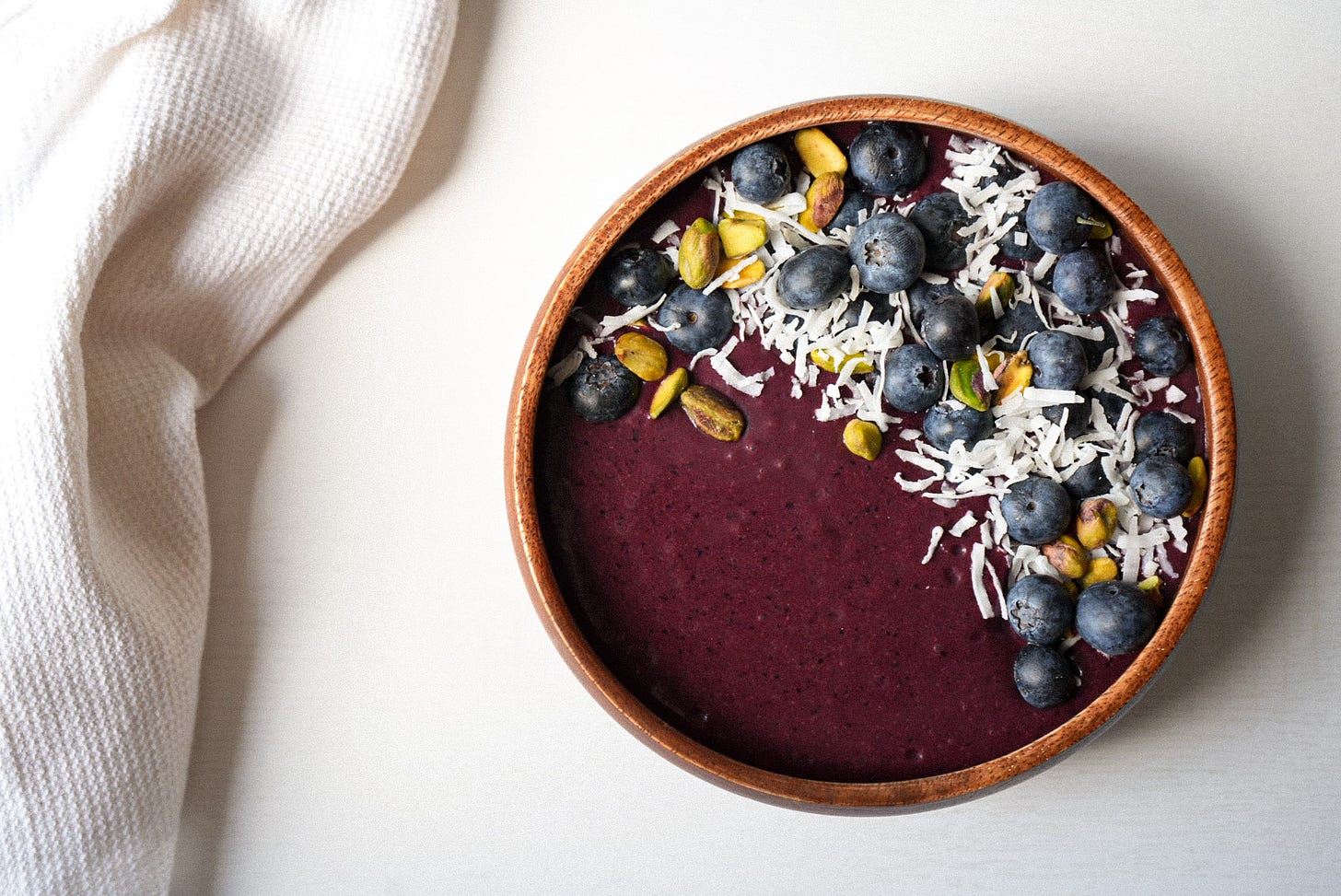
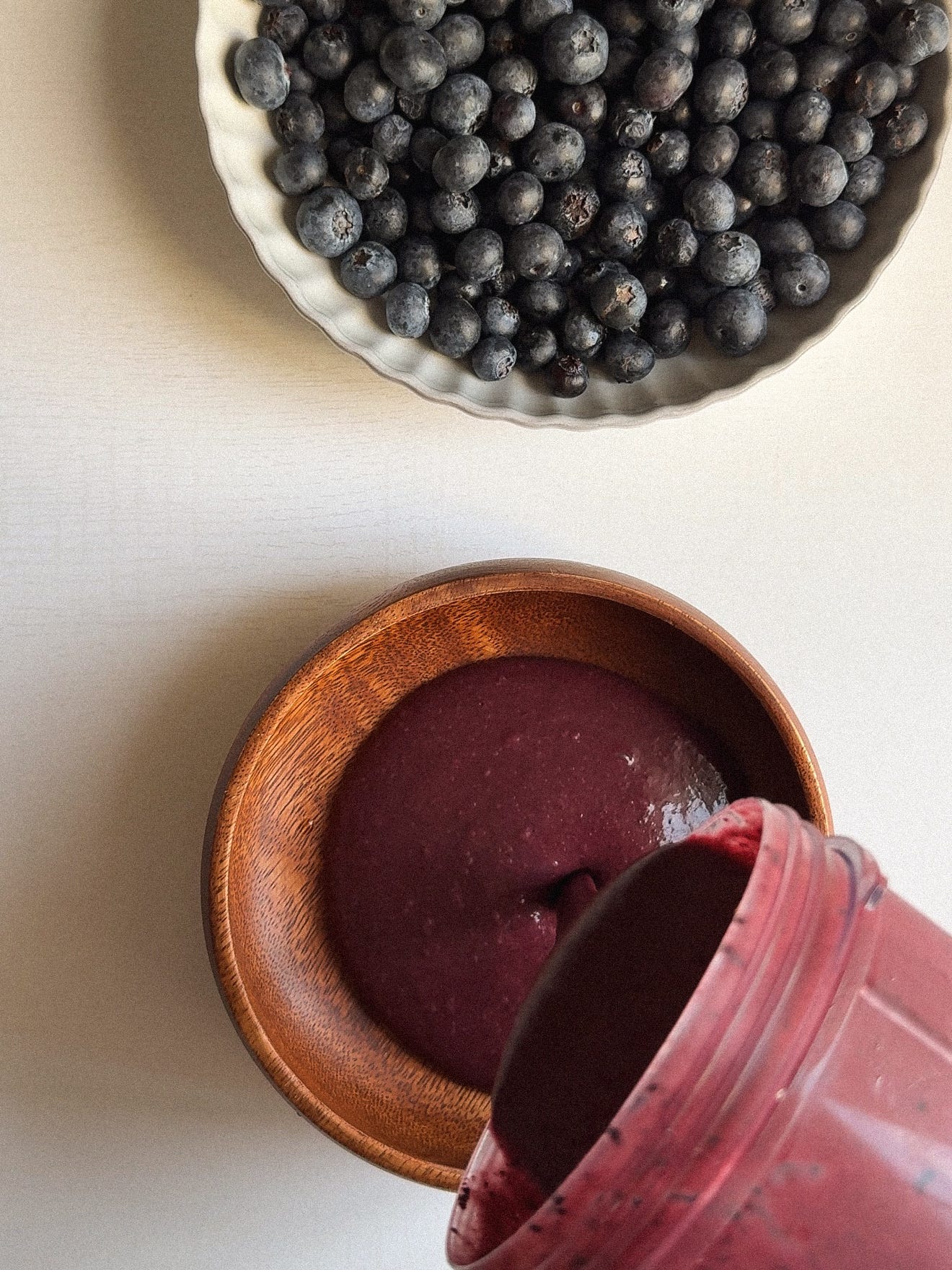



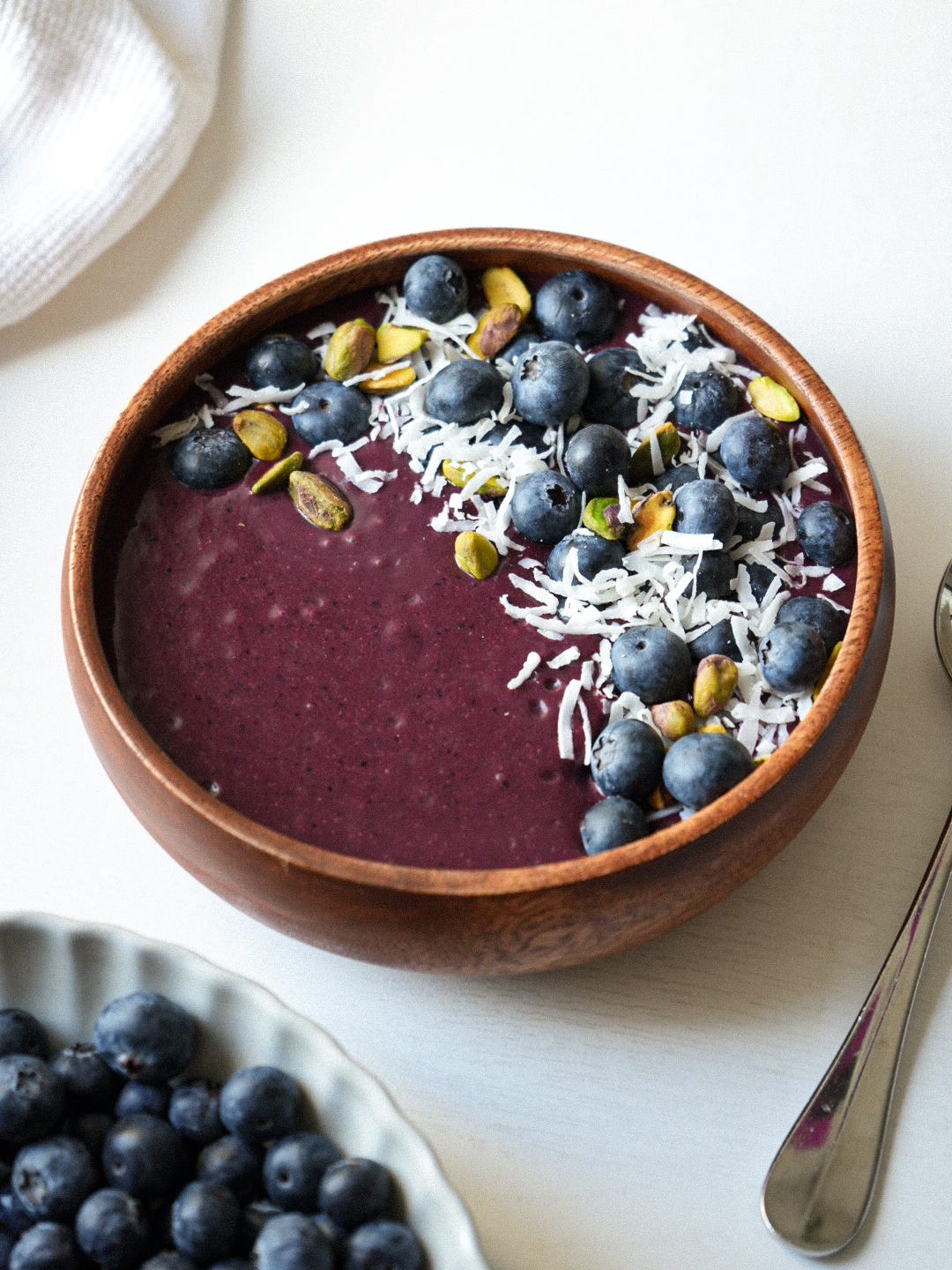
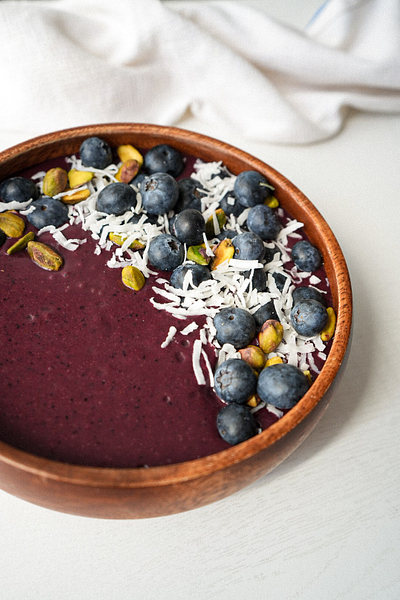



very good, I recommend the recipe which is wonderful.
This is the kind of fusion we can all agree on!